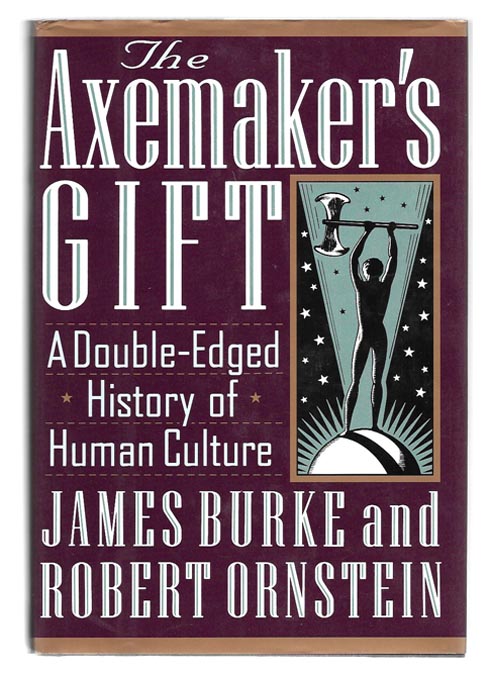
An interesting book entitled “The Axemaker’s Gift” was written by James Burke and Robert Ornstein and released 25 years ago. Their premise is that axemakers, their discoveries and innovations, significantly improved and changed lives.

In the ancient past, we all came out of Africa and began to inhabit the planet. Originally the ancient hominids used their talents to reshape stones one piece at a time and to create tools that would remake the world. About four Million years ago the axemakers appeared on the only planet capable of sustaining them. Our home, the Earth.
Prior to that epoch and roughly 13 Million years ago, several centuries of drought caused the forests of East Africa to thin out. The drier climate forced many tree-dwelling primates out of their forest homes. Those primates evolved into chimpanzees, gorillas, and a newly-discovered species. Those who moved out, would become us.
A three-and-a-half Million-year-old footprint in East Africa, discovered by Mary Leakey, shows that our human ancestors clearly diverged from the great apes. The footprint is of a creature standing on two legs. Walking upright encouraged reliance on vision and freed the front limbs for tool-making and carrying. On the East African savannah, they were no longer living in the trees. Natural selection favored those who could walk upright in the high grass and bush as they were better equipped to see predators and to find food.
Hands were more precise and capable of complex movements. The next stage of evolution was Homo habilis. Habilis changed the course of history. They shaped pebbles into flinty tools and their tools quickly could help them with their environment. These first primitive tools, 2.6 Million years ago, could be used for cutting and scraping and were found in what is now Ethiopia.
Axes made it possible to build shelters and construct settlements and the world was physically changed once and for all. Tools allowed habilis to go hunting, and return with enough food to support several families on meat for days. About two Million years ago, a five-foot, heavy-set descendant of the original hominids was living in the cooler East African hill country.
It had taken between six and nine Million years for the prehuman brain to grow enough for some form of communal living to develop and for the invention and use of tools. The earliest stone tools, dating from erectus period, are found in Kenya and Tanzania and were used for cutting and pounding vegetables, butchering meat and cracking bones to get at the marrow inside. Tools were used for sharpening animal bones and to dig for roots.
Over the ensuing Million years, axemaking became more and more sophisticated. The process of evolution selected the fundamental brain structure that for thousands of years, became the most useful for survival and reproduction. The brain was a system capable of integrating simultaneous perception of reality by all the senses.
Nearly all surviving modern foraging societies have a strong ability for basketry and cordage. They make nets and traps, play cat’s cradle and have tug-of-war games. String and twine could have been made from animal hides and from vines or bark and used for snares, to tie boat wood together and to make nets for carrying water gourds and for fishing.
Because humanity evolved from other animals, most recently from the great apes, individual inheritance is highly diverse. The growth and development of each person is, like the course of evolution, a struggle. Approximately 120,000 years ago Homo sapiens, modern humans, moved north out of East Africa into the Sahara. In the area of what is now Zaire, a cache of early spears which were cut from the bones of large fishes, were found.
Today’s climate is but a blip in geologic time. The Atlantic Ocean widens by an inch a year as plates under it spread apart forming new crust. In the future, 100 Million years, activity along eastern North America will cause the Atlantic Ocean to shrink and continents to converge. No hysterics needed to this Nature’s plan. This history of millions of years of human development illustrates the inseparable consequences of good and evil that come from our inventions.

